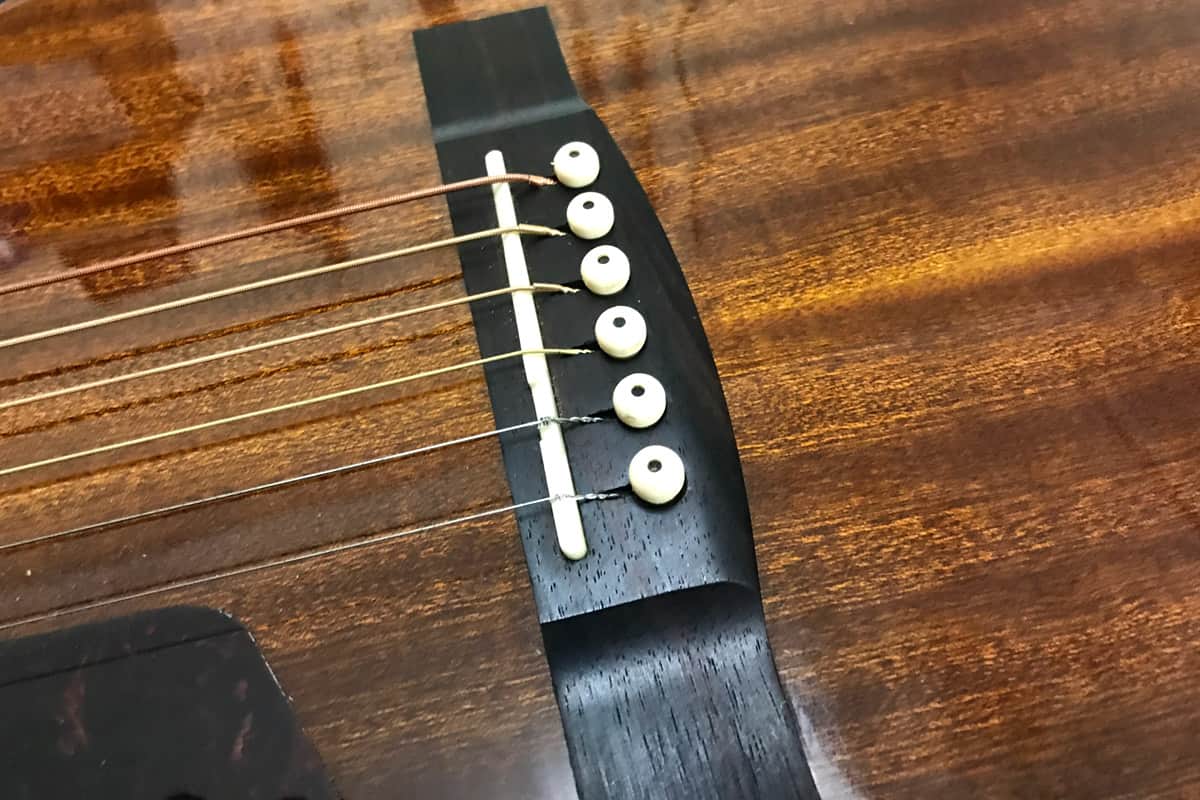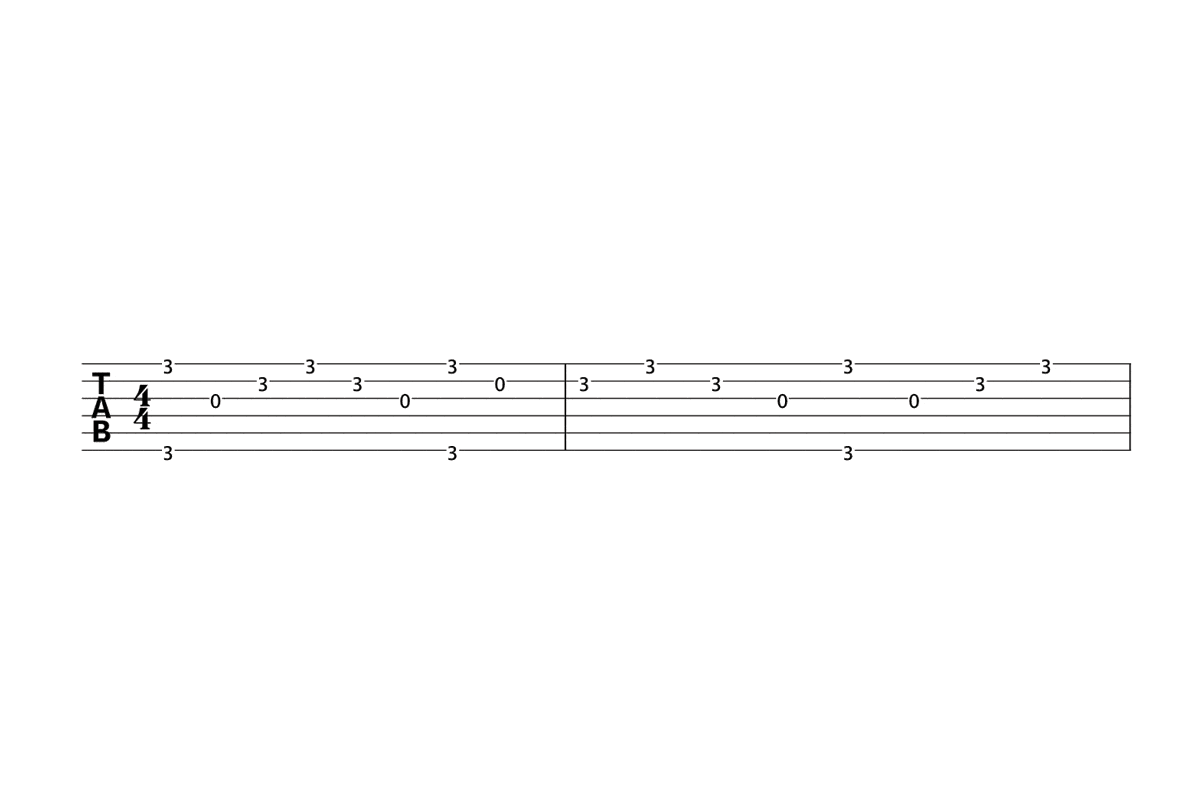One of the more challenging aspects of fingerpicking is playing without unintentionally hitting the wrong strings. When first getting started with fingerpicking this can feel like an insurmountable problem.
With this in mind, in the following short guide, we’ll discuss how to fingerpick without hitting the surrounding strings along with some basic tips on how to practice effectively. But if you are looking for a basic overview:
To avoid hitting the wrong strings when fingerpicking slow everything down and focus on hand position, anchoring the picking hand, assigning the correct fingers to the correct strings, and minimizing inefficient movement e.g. focus on finger movement, and don’t allow the wrist or arm to move. Then practice, with a focus on addressing note accuracy. Repetition is key.
For a more detailed answer continue reading, alternatively if you are looking for an introductory guide to fingerpicking click the link.
The Problem with Hitting the Wrong Strings
Fingerpicking is one of the more challenging approaches to playing the acoustic guitar. As opposed to strumming, there’s a lot more going on, both physically and mentally.
Even basic fingerpicking patterns require a higher dexterity than strumming, demanding the thumb and fingers work independently of one another.

And unless you have reached that magical place where your thumb mostly feels like it’s on autopilot, overthinking is one of the key reasons you are likely hitting the wrong strings.
Slow Down
The key to overcoming this problem is to slow down.
It might sound obvious e.g. if you were learning to drive you wouldn’t drive at 90, but it’s a common issue all the same.
Most fingerpicking songs are complex and demand a great deal of focus. And, especially when learning a new song, at times it can feel like you are barely hanging on.
If you slow things down you can put more of a focus on the technical aspects we will cover below including hand position and efficient movement, rather than merely trying to remember what your fingers and thumb should be playing.
One of the best ways to go about this is to use a metronome and learn to play at a steady rhythm.
Start playing at a slow tempo and as you gain confidence e.g. you play the piece without any errors 2-3 times in a row, increase the tempo. If you make a mistake go back to the previous tempo until you are ready to speed things up.
Break Things Down
Chunking
Chunking is the practice of taking something complex e.g. a fingerpicking arrangement and breaking it down into smaller, more retainable “chunks” of information.
Our short-term memory is limited (it’s designed that way) so trying to learn an entire piece of music as a whole can be overwhelming and lead to an inability to focus on both retrieving information (e.g. what notes our fingers and thumb should be playing) and good technique.
Breaking things down into small “chunks” makes information easier to retain and retrieve, and by addressing both areas we can then place more of a focus on correcting technical flaws that leads to problems such as hitting the wrong strings.
Incorrect Fingerpicking Hand Position
One of the most obvious reasons your fingers are coming into contact with the wrong strings is due to hand position. Having your hand in the correct position for fingerpicking will improve the efficiency of your thumb and finger movement, which in turn reduces the chances of hitting the wrong strings.
I’ve written about correcting and improving hand position for fingerpicking, including the benefits of anchoring the picking hand using the pinky or palm of the hand to improve note accuracy, so be sure to click the link above to learn more about improving your hand position.
Using the Correct Fingers
Along with hand position, it’s important you are playing in the most efficient manner possible to reduce excessive thumb and finger movement by assigning the fingers and thumb to the correct strings and reducing arm and wrist movement.
If unsure, your thumb should rest on the low E string and is responsible for the low E, A, and D strings. Your index finger should play the G string, your middle should play the B string and your ring finger should play the high E string.
If you already know a fingerpicking song e.g. “Freight Train” play the song slowly and ensure you are using the right fingers on the right strings. If not you should go back and address this, as the more you play with the wrong fingers the more you will be reinforcing this habit.
Consistent Practice, Focusing on Fingerpicking Patterns
Practice in the form of repetition is key to reducing errors and improving weaknesses in your playing.
Having a dedicated practice routine is important in terms of progressing on the guitar. But it’s also important that you practice consistently.
This means, even if short on time, that it’s much better to practice 15 minutes per day than two hours every now and then when you can find the time.
Most of us live busy lives, and this won’t always be possible, but if you can practice for at least 30 minutes per day, and focus on fingerpicking patterns that reinforce thumb and finger independence, you will iron out flaws in your playing faster.
In practical terms, this means developing muscle memory e.g. creating neural pathways that lead to less focus being required to complete complex tasks, such as fingerpicking and avoiding hitting the wrong strings.
Over time, if you practice consistently, you will look down on your fingers and almost feel like you are on auto-pilot. But this takes time and you must be reinforcing good technique.
If You’re Just Getting Started
If you are only just starting out, fingerpicking is a demanding style of guitar to learn and it will take time to improve.
Don’t get frustrated, if progress feels slow. You will only introduce unnecessary tension, which will exasperate the problem. Instead, keep in mind, that the barrier to entry when it comes to all forms of fingerstyle is high. It’s only natural to make plenty of mistakes when first starting out. The key is to have the patience and discipline to focus on technique despite this, knowing you are building a strong foundation through repetition that will eventually lead to greater progress than would be possible with technical flaws.



